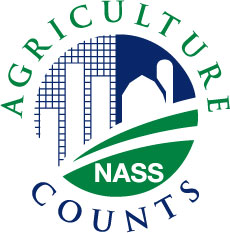
Nov 23, 2015
WASHINGTON, DC -- As the 2015 growing season comes to an end, the U.S. Department of Agriculture’s National Agricultural Statistics Service (NASS) will contact producers nationwide on the December Agricultural Survey to gather final year-end crop production numbers and the amount of grain and oilseed they store on their farms. At the same time, NASS will survey grain facility operators to determine year-end off-farm grain and oilseed stocks.
“The December Agricultural Surveys are the largest and most important year-end surveys conducted by NASS,” explained NASS’s Louisiana State Statistician Nathan Crisp. “They are the basis for the official USDA estimates of production and harvested acres of all major agricultural commodities in the United States and year-end grain and oilseed supplies. Data from the survey will benefit farmers and processors by providing timely and accurate information to help them make crucial year-end business decisions and begin planning for the next growing and marketing season. Producers not responding by mail or electronic data reporting (EDR) will be contacted by phone or in person.”
The information will be compiled, analyzed and then published in a series of USDA reports, including the Crop Production Annual Summary and quarterly Grain Stocks report to be released January 12.
“Crop information reported by producers on the December Agricultural Survey will be included in the County Agricultural Production Survey and used in calculating local yields,” explained Crisp. “USDA uses yield information from the survey to evaluate and administer vital farm disaster mitigation and insurance programs such as Price Loss Coverage (PLC) and Agricultural Risk Coverage (ARC). Farmers who receive the December Agricultural Survey are not included in the County Agricultural Production Survey; therefore this is their only opportunity to be included in the calculation of statewide yields. If you choose not to report, your unreported farm information may decide whether your locality has published yields which may be needed for calculating losses. Localities that do not have enough reports and sufficient coverage of each commodity will not be published. I encourage each producer to report their farm information so that each locality can be published.”
As with all NASS surveys, information provided by respondents is confidential, as required by federal law.